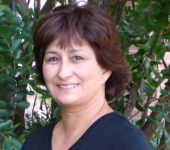• by Linda Cantu, M.A. • IDRA Newsletter • June – July 1998 • 
Gifted and talented students represent one of our nation’s greatest resources. They can become the leaders, inventors, artists, scientists and problem solvers of tomorrow. But trends in gifted and talented education across the country indicate that a significant number of students with exceptional abilities are not receiving high quality services either because they have not been identified as gifted or their programs do not address their unique strengths and needs.
Gifted and Talented Program Participation Nationally
The National Educational Longitudinal Study (NELS) found that the representation of racial and ethnic groups in gifted and talented programs favors some groups more than others. The study found that gifted and talented programs are comprised of:
- 17.6 percent of all Asian students,
- 9 percent of all White students,
- 7.9 percent of all African American students,
- 6.7 percent of all Hispanic students, and
- 2.1 percent of all Native American students (Resnick and Goodman, 1997).
Additionally, economically disadvantaged students are among the most underserved. In the NELS results, students from the bottom quartile in family income made up only 10 percent of gifted and talented program participants, while students from the top quartile made up 50 percent (Resnick and Goodman, 1997).
Gifted and Talented Program Participation in Texas
Texas figures also show that minority, poor and LEP students are underrepresented in gifted and talented programs. There are 313,142 students in gifted and talented programs in Texas in pre-kindergarten through 12th grade (TEA, 1998). White students are overrepresented in gifted and talented programs by 16 percentage points, and Hispanic and African American students are underrepresented by 15 percentage points and 5 percentage points (respectively) compared to their school population (see box on Page 10). LEP students represent only 3.4 percent of students in gifted and talented programs but make up 12 percent of the student population. African American and Hispanic students and students from low socio-economic backgrounds are the least represented in gifted programs.
Reasons for the Disparities
There are a variety of reasons that gifted and talented students are not being identified as such. In some cases, educators are unable to recognize gifted and talented behaviors exhibited by certain students due to a lack of sensitivity and adequate training (Resnick and Goodman, 1997).
Traditional methods of identifying gifted and talented students – IQ, achievement tests and teacher recommendations – are not the best ways to identify gifted students. Studies have found that these methods identify only half of the brightest students. In fact, such methods tend to overlook the most talented students (Resnick and Goodman, 1997).
Additionally, tests are generally administered in English making it difficult for LEP students to do well. Being able to speak two languages requires cognitive ability. Yet, bilingualism has often been treated as a handicap needing remediation instead of a gift requiring enhancement. IQ and achievement tests penalize non-English speakers and do not take into consideration the diverse talents of students (i.e., students who are talented in music and art).
Disparities also occur when students, teachers and school professionals have low academic expectations for culturally and linguistically diverse students. Some educators do not see LEP students as capable of being talented. Too many schools focus on deficiencies in students of cultural and ethnic groups. These students are viewed primarily as language or culturally deficient. Little is done to enhance their primary language and culture.
States that rely heavily on IQ and achievement tests are more likely to have large disparities between racial and ethnic groups within their gifted and talented programs than those who use a variety of measures to identify students (OERI, 1993).
Improving the Identification Process
The definition used in the federal Jacob K. Javits Gifted and Talented Students Education Act states, “Outstanding talents are present in children and youth from all cultural groups, across all economic strata and in all areas of human endeavor” (OERI, 1993).
To assure that all racial and ethnic minorities, economically disadvantaged youth and LEP students who are gifted and talented are identified, the Office of Educational Research and Improvement (OERI) and others such as J.S. Barnwell offer some recommendations.
- Look at a range of disciplines for gifted and talented – art, music, language, etc.
- Use many assessment measurements to assure that different ages and different talent areas are selected.
- Create an appraisal system that is free of bias, allowing students from a variety of backgrounds to be identified.
- Guide teachers in the assessment of giftedness (OERI, 1993; Barnwell, 1991).
Taking steps such as these will lead us toward a more diverse population of students in gifted and talented programs that better serves students of all types who really are gifted and talented.
Resources
Barnwell, J.S. “Limited-English-Proficient Students Can Also be Gifted!” IDRA Newsletter (San Antonio, Texas: Intercultural Development Research Association, April 1991).
Office of Educational Research and Improvement. National Excellence: A Case for Developing America’s Talent (Washington, D.C.: U.S. Department of Education, October 1993).
Resnick, D. and M. Goodman. Northwest Education (Northwest Educational Laboratory Resources, Fall 1997).
St. Jean, D. “Valuing, Identifying, Cultivating, and Rewarding Talents of Students from Special Populations,” Internet posting (Storrs, Conn.: The National Research Center on the Gifted and Talented, University of Connecticut, Spring 1996).
Texas Education Agency. 1997-98 Fall PIEMS Data (Austin, Texas: Texas Education Agency, 1998).
Linda Cantu, MA, is an education associate in the IDRA Division of Professional Development. Comments and questions may be sent to her via e-mail at feedback@idra.org.
[©1998, IDRA. This article originally appeared in the June – July 1998 IDRA Newsletter by the Intercultural Development Research Association. Permission to reproduce this article is granted provided the article is reprinted in its entirety and proper credit is given to IDRA and the author.]



